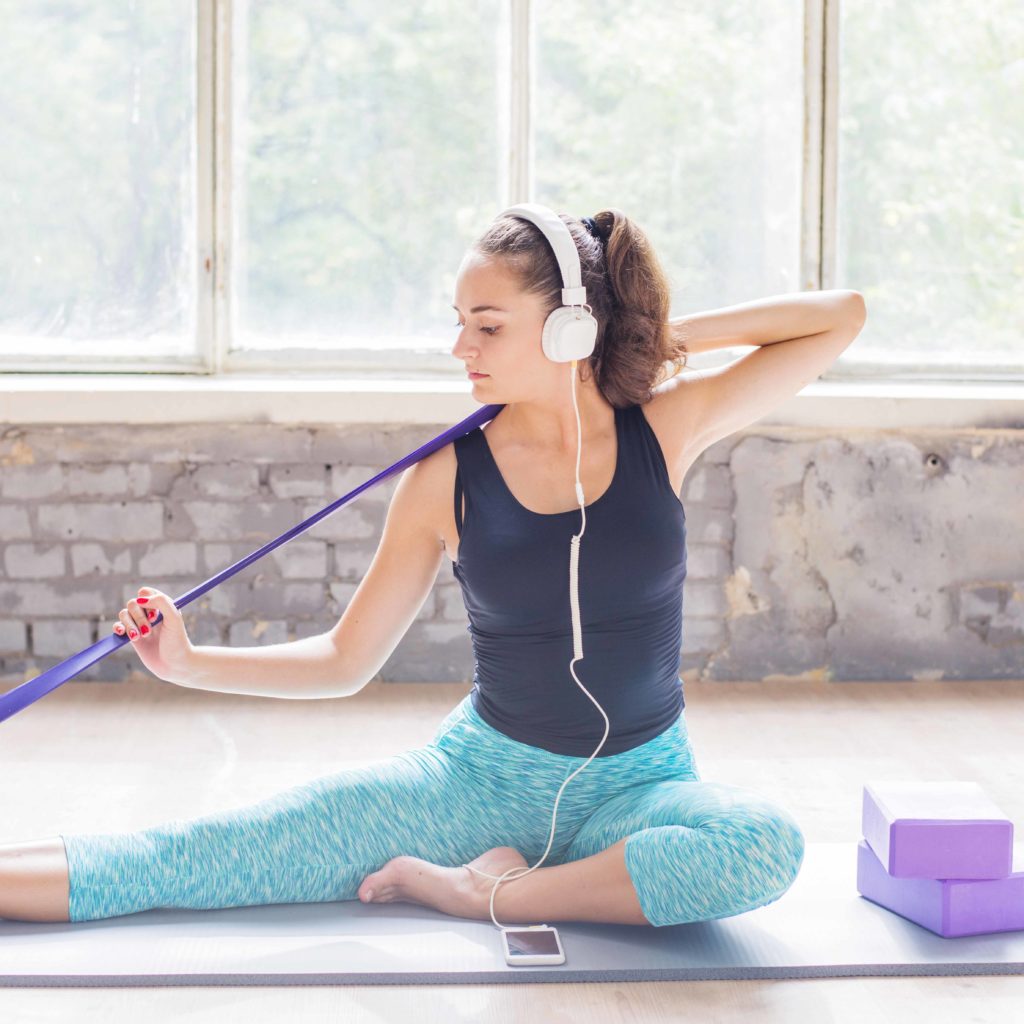A resistance band is a brilliant piece of exercise equipment. It’s extremely versatile, light and portable and one band can give you variable resistance in your strength – Workouts, similar to how you adjust the resistance on a cable machine. I keep one at my desk to open my shoulders when I’ve been hunched over for too long. But while buying one seems like it should be a quick, in-and-out kinda shopping trip, you might find yourself stuck down a rabbit hole of shapes, colours and prices – and eventually leaving with nothing. Use this guide to find the perfect resistance band match for your – Workout.
You’re trying to master a pull-up.
You need: Power loop
Maxed Medium Exercise Loop, R200, Mr P Sport
Also called similarly hardcore names, like “super band”, it’s a continuous loop made from thick, durable rubber. It’s your best bet for supporting your body weight when you’re learning pull-ups – fold it over the bar, loop one end into the other and pull to secure, then step into it with both feet. When I was first learning how to do a chin-up and then a pull-up, this helped me enormously! It’s also the best option for working against you in banded sprints – loop it around a pole and step into it so the band is around your waist, then sprint as hard as you can while the band holds you back. Try this full-body – Workout that uses a power loop.
Your band is going to be your home gym.
You need: Resistance tube with handles
Maxed Extra-Light Toning Tubes, R100, Mr P Sport
Thanks to the handles, this is your first choice for mimicking cable machines and weights using your resistance band. Stand on the band with two feet, hold the handles in each hand and pull them up to your shoulders to perform a biceps curl. Or push the handles overhead to perform a shoulder press. I find this works really well for outdoor – Workouts in the park in summer. The band is much easier to carry around than a set of dumbbells!
The goal is to build your booty.
You need: Mini band
Sparq Active Resistance Loop Band – Set of 5 with Bag, R259, Takealot.com

These are small, thin continuous loops, usually sold in a pack. If you struggle with squats, like I do, these can help: Loop one just below your knees. It will train you to push them outwards as you squat, recruiting and strengthening the often-neglected muscles on your outer thighs. I give these muscles even more attention by doing banded glute bridges and banded lateral steps. Simple exercises, but, boy, do you feel the burn!
You want an all-rounder.
You need: Theraband
Maxed Medium Latex Aerobic Band, R80, Mr P Sport
This is a thin, stretchy band that doesn’t form a loop. It’s often used by physiotherapists for rehab exercises (hence the name) because it offers gentle, controlled resistance. It’s also the most versatile of the bunch because it can stand in pretty well for any of the others if you just hold the ends or knot them. In its own right, it’s great for targeting your smaller, stabiliser muscles like those at the backs of your shoulders. My go-to desk move: Band pull-aparts. Hold the band in front of you at shoulder height with an overhand grip, arms straight and shoulder width apart. From here, pull your hands out to the sides, keeping your arms straight. You should feel your shoulder blades squeezing together. This Pilates warm-up routine uses a flexi theraband.
Find your colour.
The idea isn’t to match your band to your trainers. Resistance bad colours indicate their strength – in other words, how stretchy they are. The more stretchy, the less resistance. Lower resistance will make moves like those biceps curls easier, but if you’re using the band to support you in a pull-up, you may want more resistance initially, until you get stronger. Important: There isn’t a standard colour code for resistance bands. So if you once had a green band that was light, don’t assume your next green band will also be light. Always check the packaging.
Choose your price.
You can expect to pay anything from under a hundred bucks to around five- or six hundred Rand for a resistance band. And it’ll be tempting just to go for the cheapest and be done. Typically, the thicker the band, the more expensive it is (more material used). If you can’t afford the thicker band, but you want more resistance, you can fold the band over itself to make it thicker or simply hold it with your hands closer together so you use less of it, making it less stretchy. Therabands also tend to be cheaper than power loops. Ask the shop assistant if you can test out the bands in store – you may find the heaviest theraband is as supportive as a power loop, but a lot more affordable.
READ MORE ON: – fitness – – fitness – Advice – fitness – Gear



